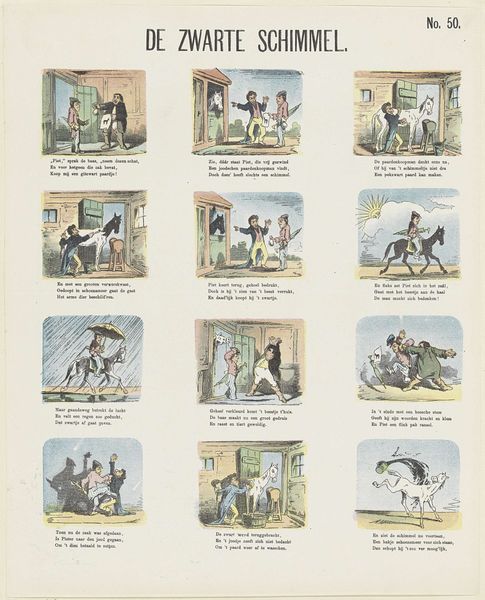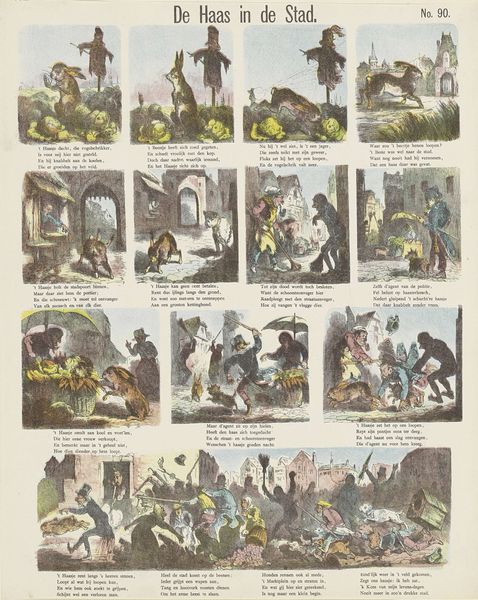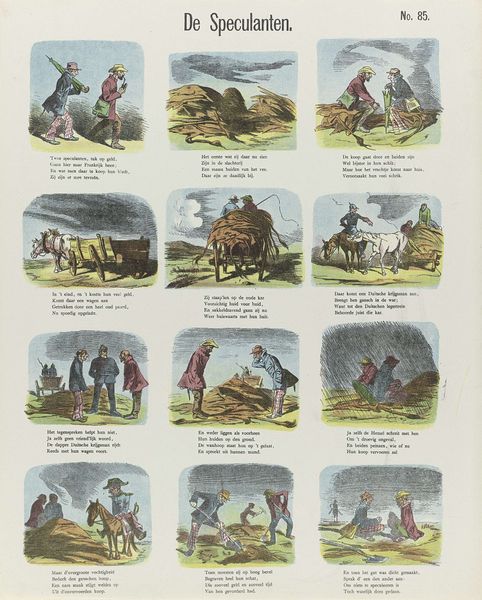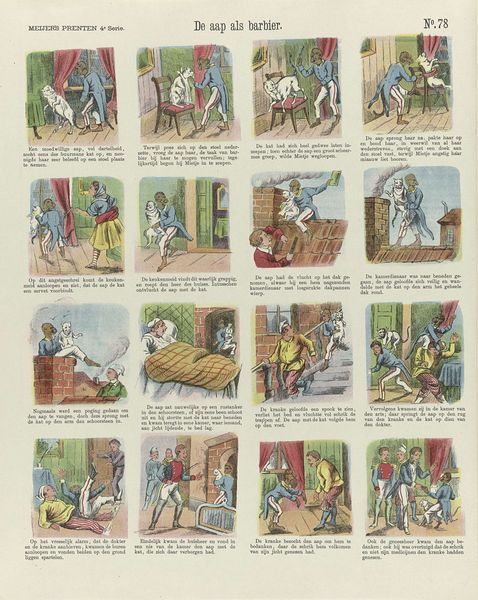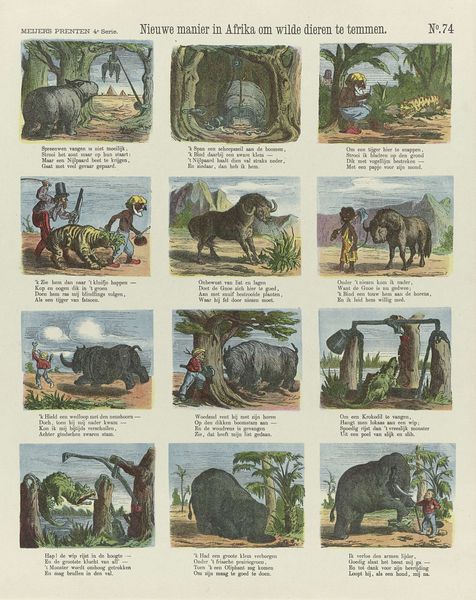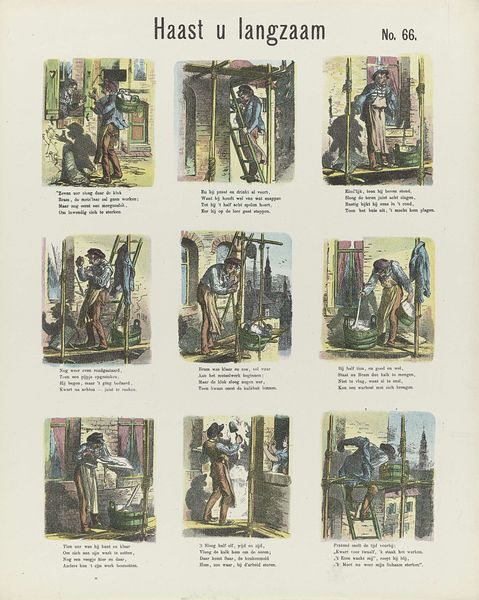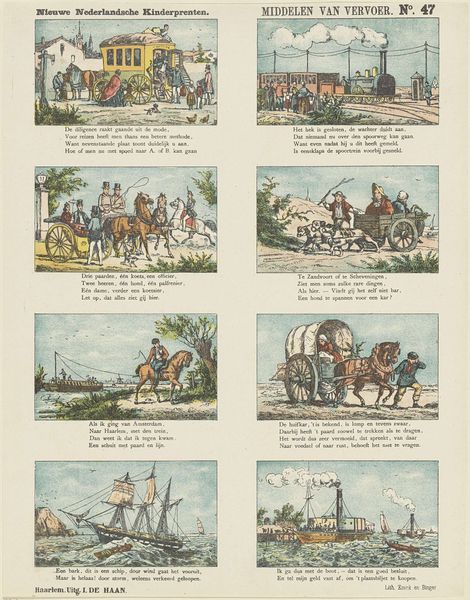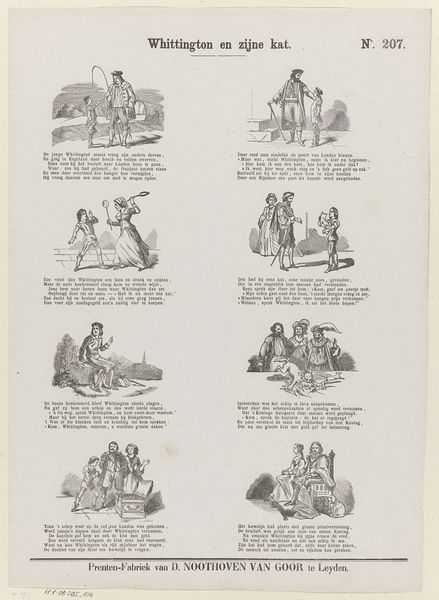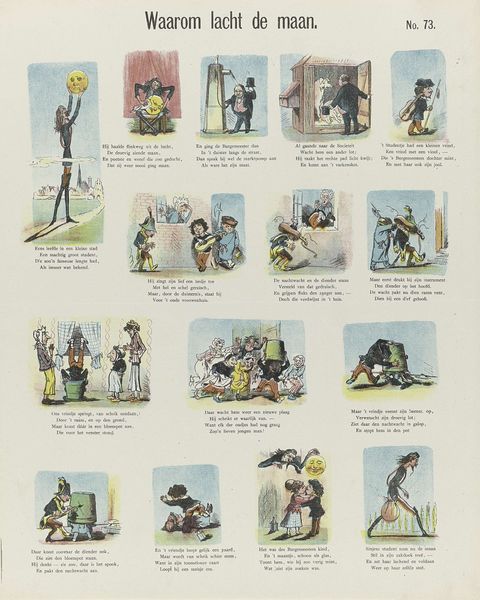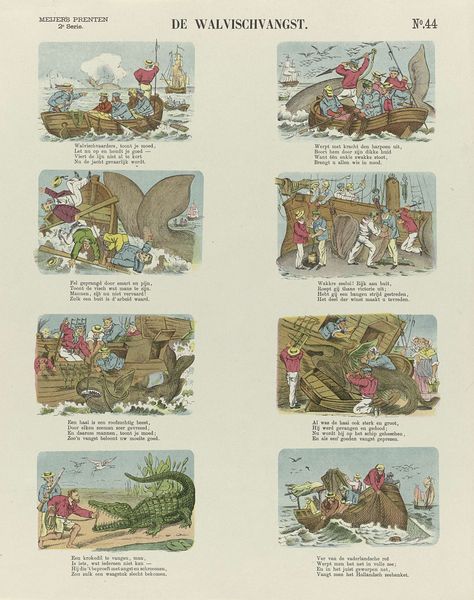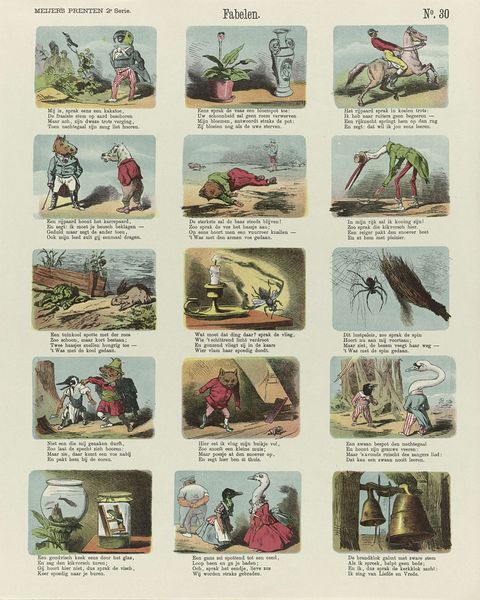
#
narrative-art
# print
#
comic
#
genre-painting
Dimensions: height 424 mm, width 344 mm
Copyright: Rijks Museum: Open Domain
Curator: What strikes me immediately is the comic quality of it— almost like an early form of a storyboard. It feels playful and mischievous. Editor: That’s a great entry point! We’re looking at "De Tafeldans," or "The Table Dance," a print made in 1878. The artist, part of the De Ruyter & Meijer collective, presents a narrative sequence laid out in twelve little vignettes. It gives us a window into, perhaps, the social habits of the time. Curator: Twelve little acts in a play about drinking… there's definitely a performance unfolding. I can imagine the artist having a sly chuckle while etching each frame. Tell me more about the setting. Editor: Well, consider the context of the late 19th century. Leisure culture, especially among men, often centered around establishments like pubs. This print likely satirizes behaviors observed in such spaces. I read it as a commentary on social norms around alcohol consumption and perhaps, male bonding gone awry. Curator: Absolutely. The body language becomes increasingly exaggerated. From sophisticated sipping to what looks like near fisticuffs! Do you think there is an underlying message beyond social commentary? Editor: Definitely. The sequential nature is important. We see a descent, a loss of control, perhaps even a moral failing as the evening, and the drinks, progress. The text beneath each image is critical to understanding it, since it points to social criticism and possible commentary on class behavior. Curator: I am especially drawn to the stylistic quality of the characters. Exaggerated and expressive, each character has an archetypical vibe that somehow transcends its time. They are still relatable, I guess! Editor: Indeed. Even today, we see echoes of these archetypes in how people navigate social drinking. So, perhaps "The Table Dance" serves as a timeless observation on human behavior, and definitely encourages reflections on class, social norms and possible excess. Curator: Yes. It certainly leaves you pondering, with a smile, how little some things change! Editor: Exactly, art not just for art's sake, but as a mirror reflecting society's perennial performances.
Comments
No comments
Be the first to comment and join the conversation on the ultimate creative platform.
